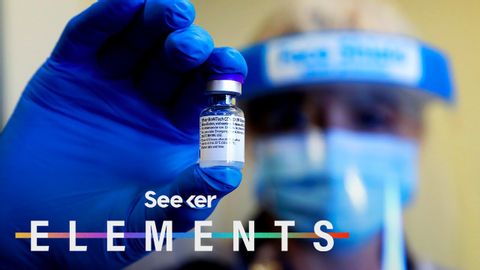
Subtitles & vocabulary
The COVID-19 Vaccines Are Here. So What Happens Next?
00
Summer posted on 2020/12/23Save
Video vocabulary
overwhelming
US /ˌovɚˈhwɛlmɪŋ, -ˈwɛl-/
・
UK /ˌəʊvəˈwelmɪŋ/
- Transitive Verb
- To defeat something or someone completely
- To affect someone emotionally in a strong way
- Adjective
- Having too much to handle (e.g. work)
- Very great or very strong; so powerful that you cannot resist or decide how to react
B2
More pandemic
US /pænˈdɛmɪk/
・
UK /pæn'demɪk/
- Adjective
- (of a disease) existing in almost all of an area or in almost all of a group of people, animals, or plants
- Noun
- a pandemic disease
C2
More prioritize
US /praɪˈɔ:rətaɪz/
・
UK /praɪˈɒrətaɪz/
- Transitive Verb
- To rank things in importance
B1TOEIC
More recommend
US /ˌrɛkəˈmɛnd/
・
UK /ˌrekə'mend/
- Transitive Verb
- To advise or suggest that someone do something
- To endorse or support something publicly.
A2TOEIC
More Use Energy
Unlock All Vocabulary
Unlock pronunciation, explanations, and filters
